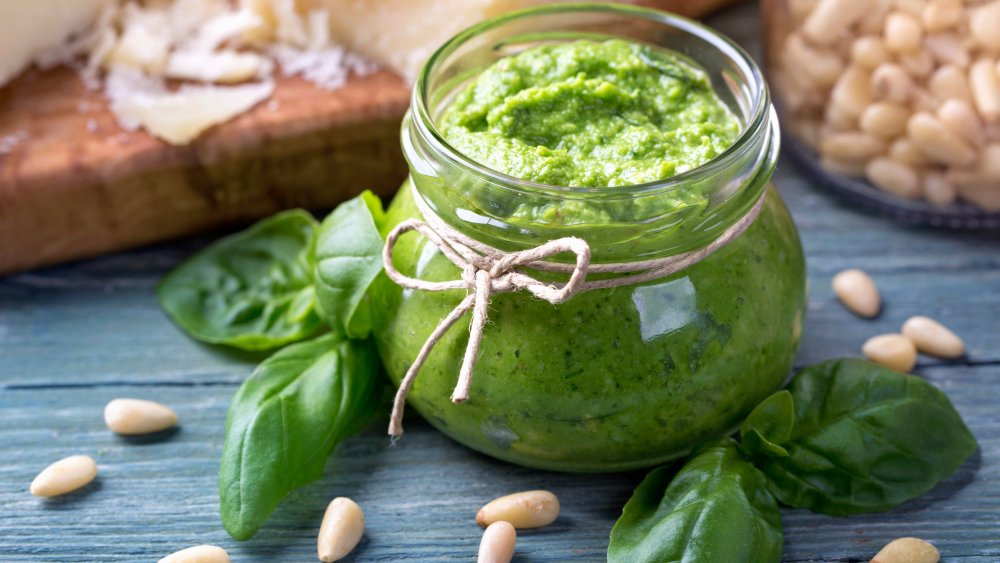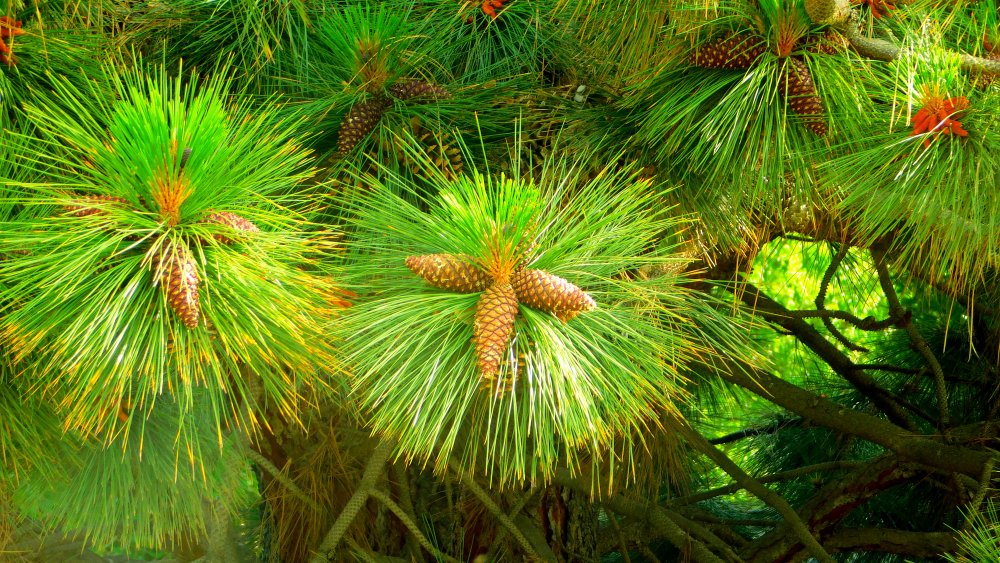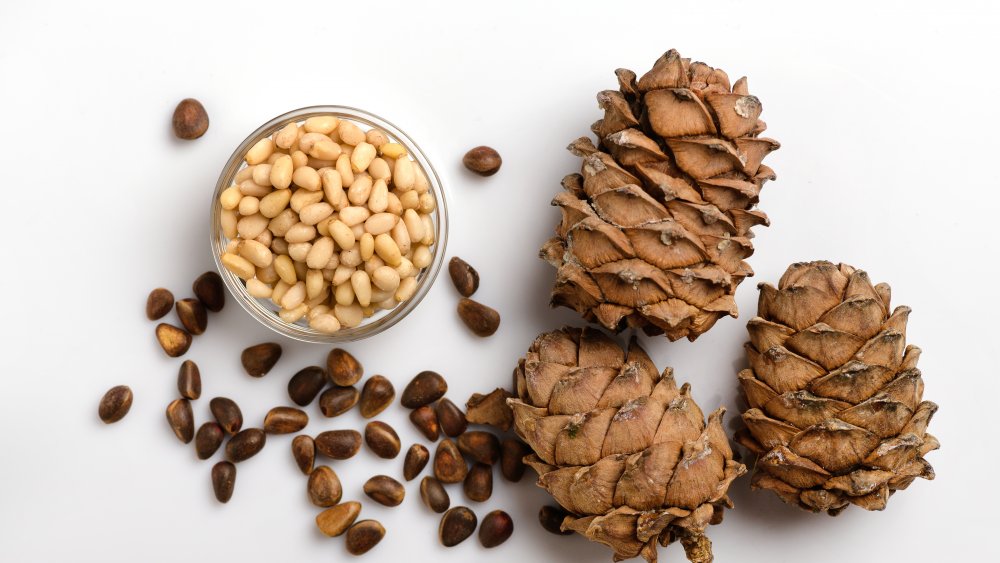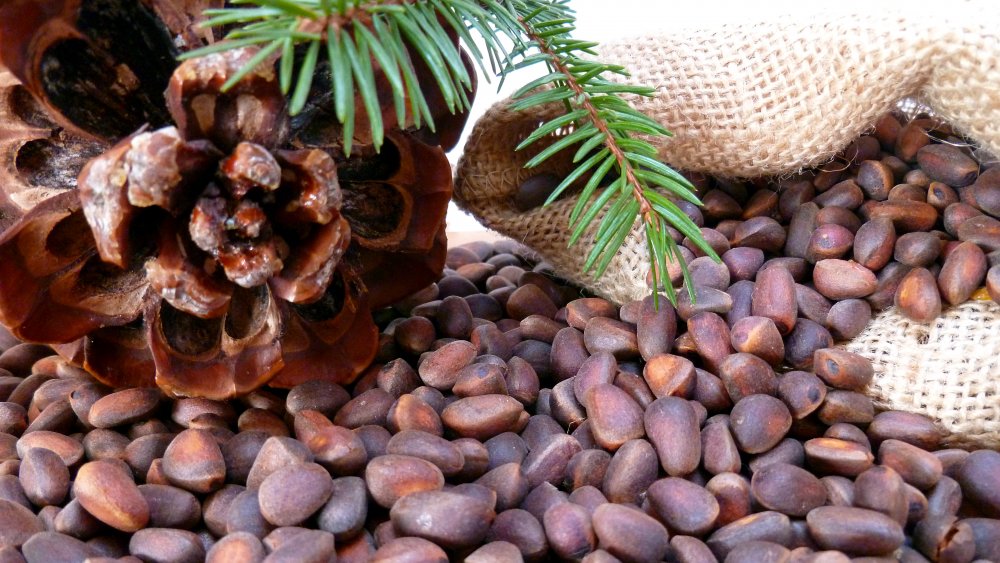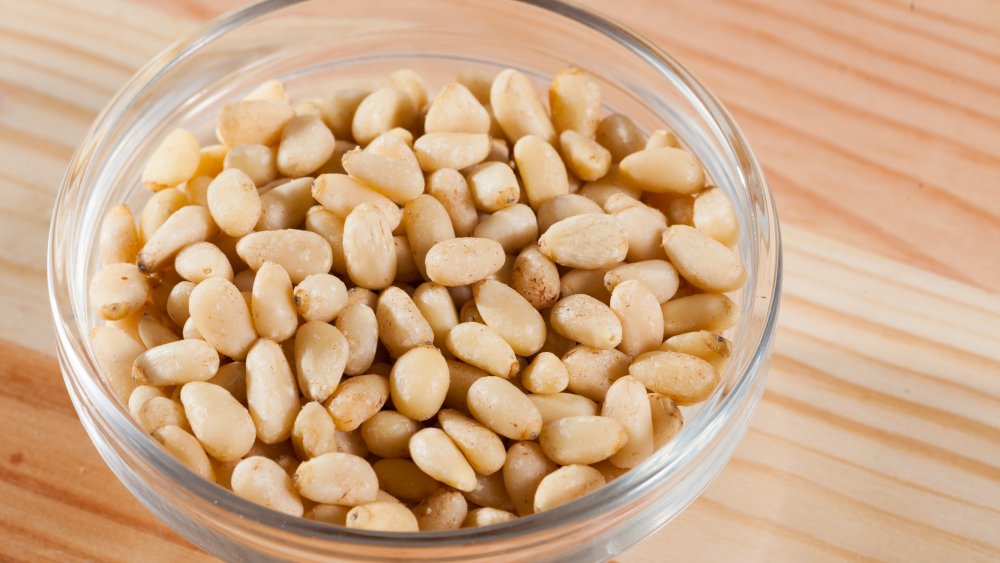Why Are Pine Nuts So Expensive?
They're shaped like little ivory teardrops, taste sweet and buttery, can be enjoyed raw or roasted, and are best known for their star turn in a summery pesto alongside basil, garlic, a good olive oil, and parmesan cheese (via The New York Times), even though they are also used widely as part of a meal from snacks, appetizers, and entrees to desserts.
In the U.S. Southwest, The Kitchn says the pine nut is even brewed with coffee. Also known as pignoli or the pignon nut, the pine nut is one of the most expensive ingredients in the world, thanks to the amount of time needed to cultivate the nuts and the amount of effort required to extract the pine nut from the tight embrace of its double shell.
Not all pine trees can produce pine nuts
All 40 species of pines around the world today produce pine nuts, (via HuffPost), but only about 20 types of pine trees produce seeds that are large enough to pick. The pine nuts we consume generally come from four types of trees that like hanging around the vicinity of the Northern Hemisphere (via HuffPost): the Mexican pinon (Pinus cembroides), the Colorado pinion (P. edulis), the Italian stone pine (P. pinea), and the Chinese nut pine (P. Koraiensis).
The seeds are stored in a part of the tree we are most familiar with — the pine cone, and it generally takes around 15 to 25 years for pine trees to begin producing seeds, and up to three times that (so give or take 45 to 75 years) for trees to reach their prime, pine nut-producing years (via Home Stratosphere).
Pine cones need 18 months to develop
When we think of pine cones, we generally think of Christmas, and because they seem to be on the ground everywhere, we could be forgiven for thinking it doesn't take much for pine cones to grow and fall out of their trees. On the contrary, HuffPost says some pine cones need 18 months to develop the sweet little nuts, while others need up to three years (what?) before they are ready to go with their precious cargo.
The pine trees begin to bud in the spring, and grow through to the end of summer. The cones then stop growing and become dormant throughout fall and winter, and then become mature the following spring or summer.
Pine nuts need to be extracted by hand
Pine nuts are ready for harvest around a week and a half before they actually mature, which means once the cones are picked, they need to be left alone to mature before the pine nuts can be extracted. To help them along, workers load the cones into burlap bags and leave them in the sun to dry for about 20 days. The heat is said to help the cones open up so the nuts can be extracted more easily (via Abadia Retuerta). When they are ready, the cones are then smashed, so the seeds can be separated — by hand — from the cracked remains of their original shell.
But it doesn't end there. HuffPost says pine nuts have a second shell which must also be removed (also by hand) before the nuts can be eaten. These shells range in thickness from very thin (easier to remove) to very thick, which can be more of a struggle to crack. Mexico's Abadia Retuerta says once the pine nuts are extracted, they are sorted according to size before they are brushed, washed and then packed and ready for distribution. The men and women involved in the extraction of the pine nuts are artisans, which should explain why pine nuts are priced the way they are.
You can get pine mouth by eating too much pine nuts
It must have taken more than a bit of effort and creativity for the first humans from the Paleolithic times to extract the pine nut and work out that the inside of the pine cone was not only edible, it was delicious, but food scientists say pine nuts have been part of the human diet for about 2,000 years now. Today pine nuts are eaten out of the bag, or roasted and used as an add-on ingredient for various dishes.
But there can be too much of a bad thing, especially where consuming pine nuts is concerned. Pine mouth, or pine nut syndrome, happens when you eat too many pine nuts, and it leaves just about everything you eat taste metallic and bitter for a few days afterward. Pine mouth most often occurs with pine nuts produced by the type of pine tree that's found in China, so as long as you stay away from those pine nuts (and you cut back just to be sure), you should be all right. The Kitchn also warns that pine nuts turn rancid quickly, so it is best to keep fresh nuts in the refrigerator until they are ready to be eaten.
